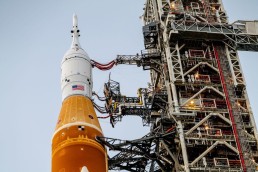August 23, 2022
Fly Me to the Moon! NASA’s Orion Spacecraft with the Airbus-Built European Service Module is Ready for Launch

August 23, 2022
Fly Me to the Moon! NASA’s Orion Spacecraft with the Airbus-Built European Service Module is Ready for Launch
